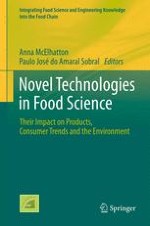2012 | Book
Novel Technologies in Food Science
Their Impact on Products, Consumer Trends and the Environment
Editors: Anna McElhatton, Paulo José do Amaral Sobral
Publisher: Springer New York
Book Series : Integrating Food Science and Engineering Knowledge into the Food Chain
